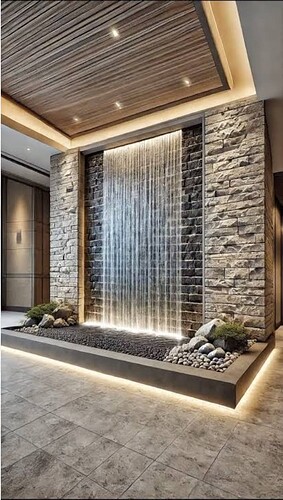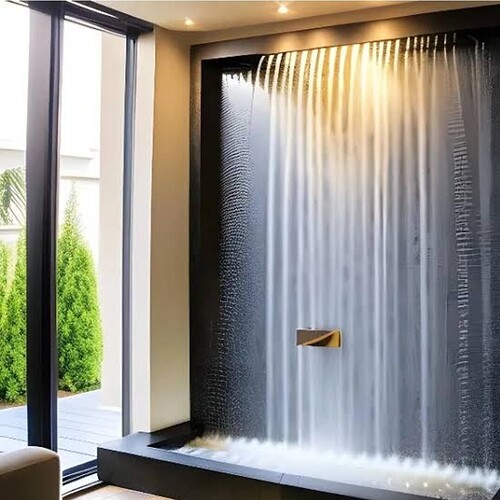Homeowners today are increasingly looking for ways to blend natural elements with modern design. One trend that has gained popularity is the incorporation of indoor waterfalls and feature walls. These design elements not only enhance the visual appeal of a space but also create a calming atmosphere, transforming ordinary interiors into soothing retreats.
The Appeal of Indoor Waterfalls
Indoor waterfalls serve as dynamic focal points, combining movement, sound, and design. The gentle trickle of water has a therapeutic effect, helping reduce stress while masking background noise. This makes waterfalls ideal for living rooms, entryways, or even home offices where a tranquil ambiance is valued.
Design options vary widely. A sleek, glass-panel waterfall suits contemporary homes, while a natural stone or slate waterfall blends seamlessly with rustic or earthy interiors. Lighting can also be integrated behind the water to create shimmering reflections at night, turning the feature into a striking visual centerpiece.
Beyond aesthetics, indoor waterfalls can help maintain humidity levels in dry climates, offering a subtle functional benefit alongside their beauty.
Feature Walls as Design Statements
Unlike waterfalls, which involve flowing water, feature walls use materials, textures, or patterns to create impact. A feature wall may be designed with reclaimed wood, natural stone, decorative tiles, or even living greenery. They add depth and personality to a room without requiring extensive construction.
For example, a stone feature wall
behind a fireplace conveys strength and warmth, while a wood-panel wall in a bedroom creates a cozy, cabin-like atmosphere. In modern spaces, homeowners might choose geometric tiles or 3D wall panels to achieve a minimalist yet striking effect. Feature walls can be further enhanced with accent lighting, drawing attention to textures and creating dramatic shadows.
Combining Water and Texture
For homeowners seeking maximum impact, it’s possible to merge both ideas: a waterfall feature wall. This design uses cascading water over textured materials such as stone or glass, offering a multi-sensory experience that elevates the entire room. It blends the tranquility of water with the artistry of surface finishes, making it an unforgettable statement piece.
Installation Considerations
While stunning, these features require planning. Waterfalls need professional installation to ensure proper plumbing, waterproofing, and pump systems. Regular maintenance is also essential to keep water clean and prevent mineral buildup. Feature walls, on the other hand, are less complex to install but still benefit from skilled craftsmanship, especially when using heavy materials like stone.
Budget plays a role as well. A simple wood-paneled feature wall may cost a few hundred dollars, while a custom indoor waterfall can run into the thousands, depending on size, materials, and complexity.
Enhancing Lifestyle and Value
In conclusion Both indoor waterfalls and feature walls enhance a home’s ambiance and can increase resale value. They appeal to buyers seeking unique and luxurious design touches that set a property apart from standard interiors. More importantly, they create a personal oasis where homeowners can relax, entertain, and enjoy daily living surrounded by beauty.

